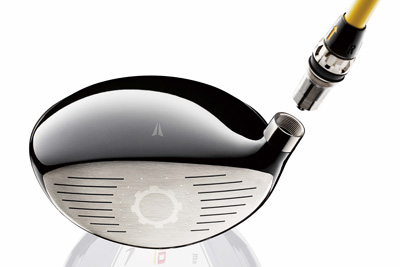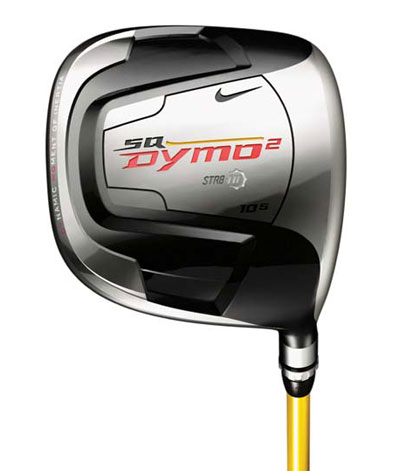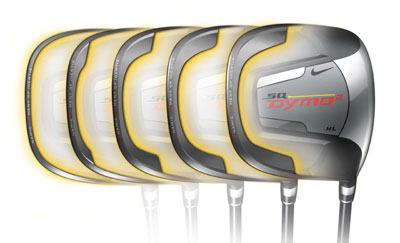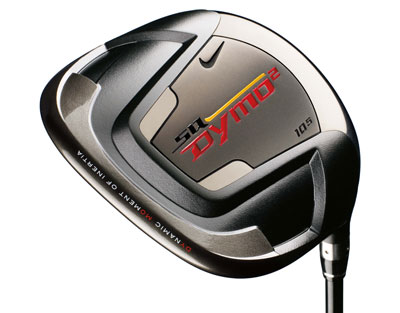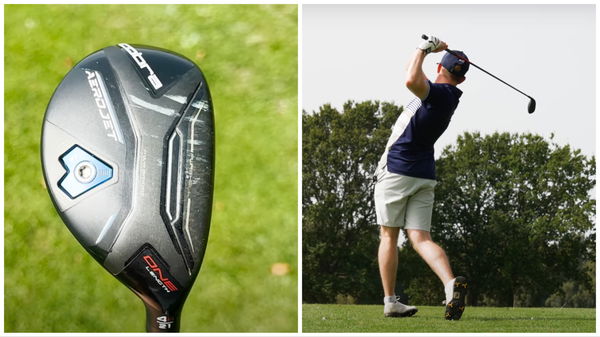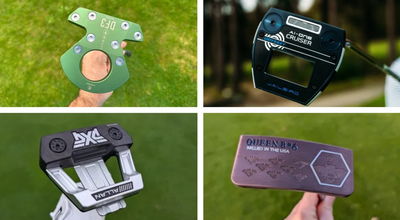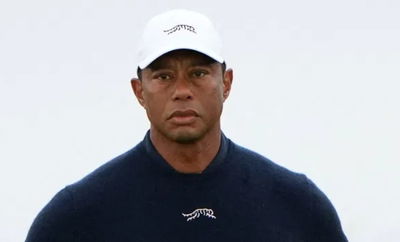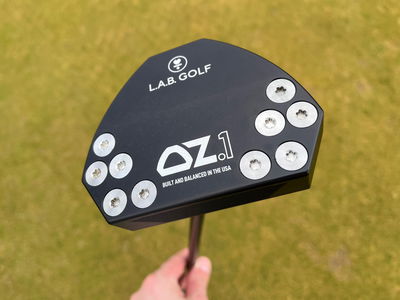TESTED: Nike SQ Dymo STR-8 FIT and SQ Dymo drivers
Adjustments claim 'eight different ways to hit it straight'

THERE'S NO DENYING the Nike Sumo driver and its square-headed compatriot the Nike Sumo2 made quite an impact in 2007/8 with their distinctive looks and sound that set them apart from their rivals. But in an industry where trends and tastes change as quickly as a Wall Street share index, manufacturers have to be constantly updating their products to satisfy the insatiable appetites of their customers for a driver that hits the ball straighter and further. Enter, the Sasquatch (SQ) Dymo STR-8 FIT, with a price tag of £360 and the SQ Dymo (£250), both of which will be available in square and traditional rounded head shapes. In terms of technology, the most ground-breaking of the two is the STR-8 FIT, which joins a growing band of drivers that can be adjusted to suit the golfer's preference. And while TaylorMade and Mizuno drivers have been introduced to allow the headweight to be manually altered to change the shape of shot and its trajectory, the SQ Dymo STR-8 FIT offers the chance to adjust the face angle in what it calls ‘eight different ways to hit it straight’. Touting both Dymo (Dynamic Moment of Inertia) STR-8 FIT drivers as the solution for players who want to counteract the effects of slices or hooks without having to change an already grooved swing, Nike says golfers with straighter shot patterns will be able to adjust the face to promote a draw or a fade according to the conditions out on the course. A torque wrench is provided with the club and, like the Mizuno MP-600, fits into a pocket on the outside of the clubhead cover. A couple of twists and a player can slot the shaft into the head into eight different positions - three ‘closed’, two ‘neutral’ and three ‘open’. Angles range from a neutral position of zero degrees to one and two degrees, closed or open. In each clubhead position of the lie angle also changes slightly. | |
It sounded feasible in theory but how would it work in practice? Pretty effective, actually. The head can be adjusted easily with the spanner which emits a high pitched noise to tell you that the shaft has been tightened sufficiently won't fly off at the top of your backswing. There's also a step-by-step manual to ensure the butt of the shaft is aligned correctly - a sort of DIY puring! Opting for maximum draw, somewhat unerringly, I was able to get the ball swinging dramatically right to left before loosening, then tightening the head to the maximum fade option to fight a 20mph crosswind off the right and have the ball flying pretty straight. With no wind, shots with this adjustment would have curved my ball to the right. So far, so good, but don’t we all make adjustments in our address and posture when we set up for a draw or a fade? The only difference here, it seems, is that when you look down at the clubhead you’re fighting the natural tendencies of your hands, eyes and senses to address the ball square-on with the face. The result is that, refusing to let rip with a closed face, your hands tend to get well in front of the ball to keep the flight straight and behind the teed-up ball as you try to square up a driver that’s set up for a fade. It didn't look or feel right and with the Rules of Golf preventing adjustment of a club during a round, the idea of opening up the face to deal with a dogleg right hole with the initial set-up aiming to make the most of the opening dogleg left, it could lead to some confusion. And golf is difficult enough without the added trauma of an adjustable clubhead. Anoraks might argue that you could open the face by one degree for the entire round to perhaps deal with a persistent cross wind. Well that's great if all the holes were in the same direction and you could catch a bus back to the clubhouse! But golf isn't like that and the idea of using a club to groove a swing fault goes against the grain. Surely we'd be better off having a few lessons from the pro? In my experience, golfers with slices and hooks already compensate for these faults by aiming left or right, so buying a club to do this for you could make the game even more complicated than it already is. | |
Having described the technology and the thinking behind it let's consider how the clubs performed.
With the square-head model, the ball flight was high - even using a 9.5- degree model with a stiff shaft. The High Launch model (13 degrees of loft), offers an even higher ball flight, but my shots headed dead straight down the range. This would be a good choice for those who struggle to get the ball airborne with their tee shots and don’t mind sacrificing a bit of distance for increased accuracy.
The square-headed Nike drivers are all about increasing accuracy because the shape helps reduce twisting of the face at impact. Though they are far from short in terms of distance compared with traditionally pear-shaped drivers (especially on damp winter fairways when carry is more important than roll), there are many drivers, which deliver a longer, more penetrating ball flight and offer the kind of launch conditions that better players demand. However, for the rest of us, the yardage on offer is perfectly acceptable.
A huge amount of research - far more than most of us would believe - goes into creating a distinctive but acceptable sound from the face of our golf clubs that generates a satisfying feedback to the golfer. The sound generated from the Dymo models is akin to the most recent family of Sumo drivers. It was noisy but pretty solid and without any of the tinniness that has been associated with the first models - similar, perhaps to rattling dustbin lids (before the emergence of today's wheelie bins)
Nike has toned down clubhead cosmetics, dispensing with the garish bright yellow on the sole of the Sumo clubs and introducing a more pleasing black and brushed steel with a subtle, classier red logo. The contrast between the Power Bow weighting on the crown of both models has also been blended making it much less distracting. If the square driver doesn't appeal - and many still perceive the shape as too contemporary - the rounded model will satisfy more traditional tastes, while delivering the same technology.
Priced at £360, the SQ Dymo STR-8 FIT is available with three shaft options - the Nike Golf UST Proforce AXIV Core in 59, 69 and 79gram weights. Loft options are: Men’s 8.5 (right-hand only), 9.5, 10.5, 11.5 (RH/LH) and High Launch (RH only) and Women’s 11.5 (RH/LH) and HL (RH). | |
For those for whom the adjustable driver concept doesn't yet appeal (and as you've probably detected, I'm one of them) the Dymo and Dymo2 drivers might prove a more appropriate choice. Dymo stands for ‘Dynamic Moment of Inertia’ which, says Nike, combines all the elements of driver performance, including head size and geometry, centre of gravity, loft and lie angles as well as spin ratios to offer the optimal performance for each club. The main design feature in both models is the size of the Power Bow Weighting - different in each loft option. The weighting is smallest in the lower-lofted 9.5-degree model and features a higher face, with a more forward centre of gravity, to promote a more penetrating trajectory with less spin. The higher-lofted 10.5-, 11.5- and 13-degree models have the weight progressively increasing, moving the centre of gravity further and lower back from a shallower face to create higher launch angles and spin rates.
Out on the range, the effects of the different weighting and centre of gravity locations was hard to distinguish in terms of performance, any more than you would in any other group of drivers with different lofts. The lower lofts were more penetrating and were more workable, especially in the rounded head, while the square model produced the kind of high, floating, dead straight shots around which the square geometry has built its reputation.
Priced at £250, both models are fitted with Nike Golf’s UST Wide Body Shaft with an AXIV Core. It features a larger overall diameter throughout the body, to provide more stability through impact. Loft options are: 9.5 and 10.5 (RH/LH), 11.5 and 13 HL (RH only), Women’s 13 HL (RH only). | |
Golfmagic verdict | |
The concept of interchangeable face angles is innovative, but that’s about all it has going for it. The idea of moving towards DIY custom-fitting is, in my opinion, a backward step, as is the idea of grooving bad swings. The introduction of drivers that make your bad swings less painful is one thing but with its adjustable face technology, Nike seems to be taking the concept one step too far and creating confusion rather than simplicity. The movement of weight to create different launch trajectories in the Dymo and Dymo2 is not new, but is this the way driver design trends are going - with two or three heads that deliver different shot shapes for different players? The cosmetics of all four Dymo models is a considerable improvement on their predecessors but I’m not convinced, in these stringent times, despite some improved performance, it will tempt those with Sumo drivers already in the bag to make the upgrade or encourage those not already locked in to the Nike brand to make the switch. |
Sponsored Posts
Latest News
![Lexi Thompson [Instagram]](https://cdn.golfmagic.com/2025-04/le122.jpg?width=400)

